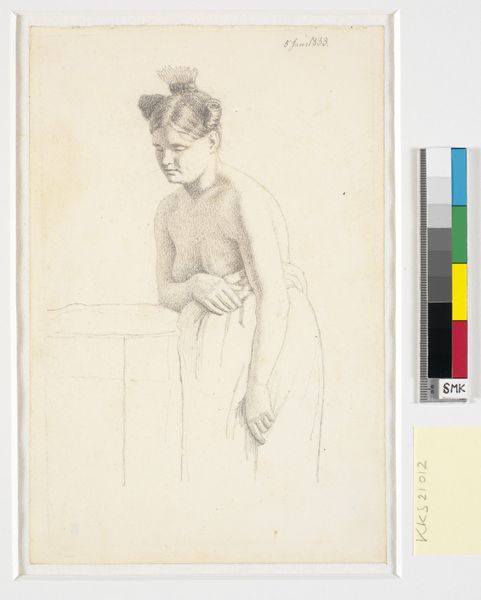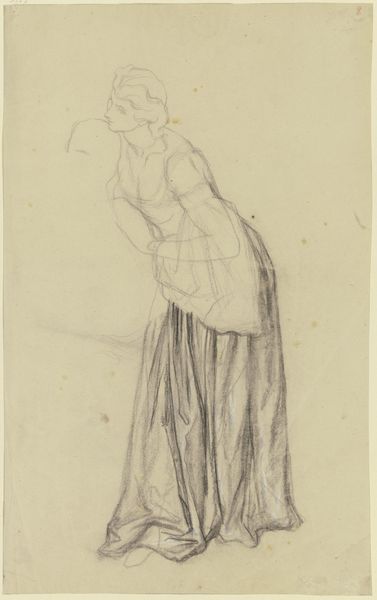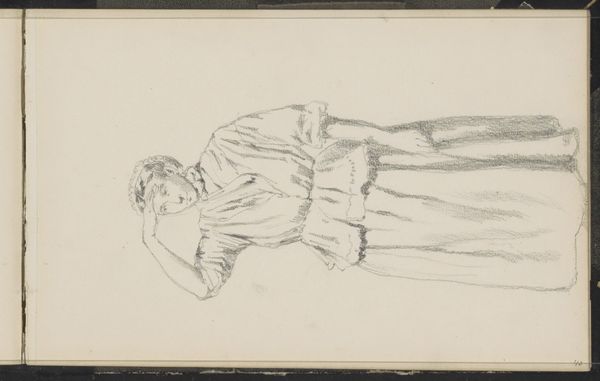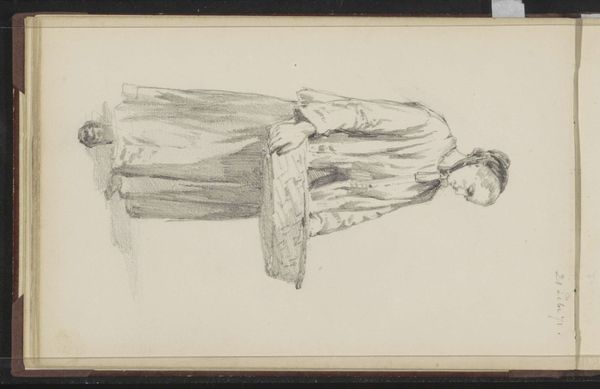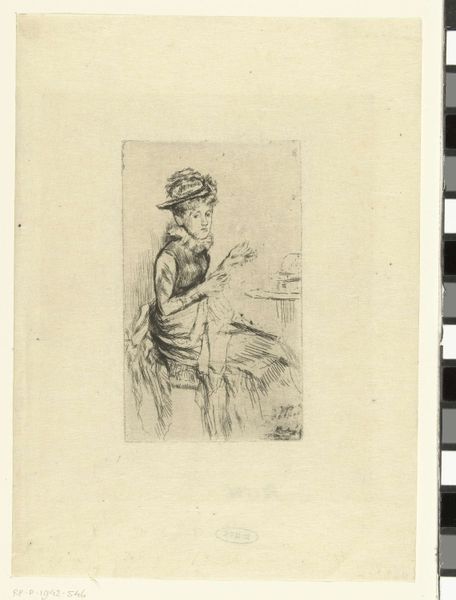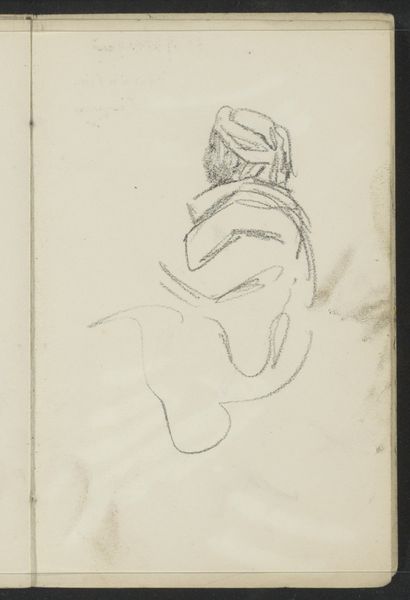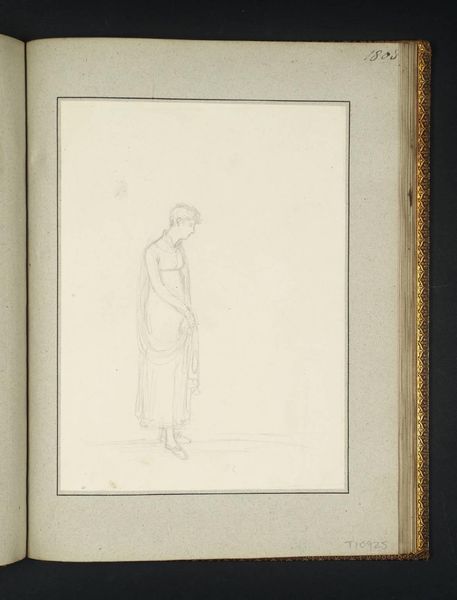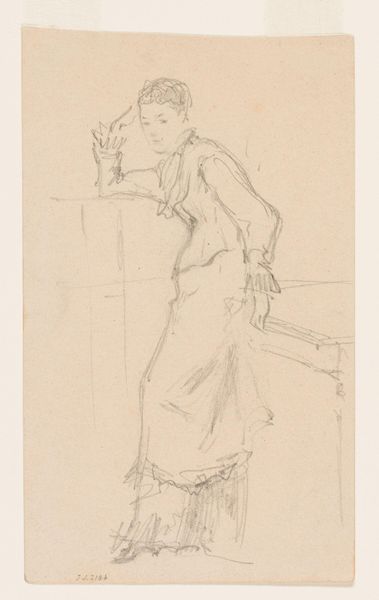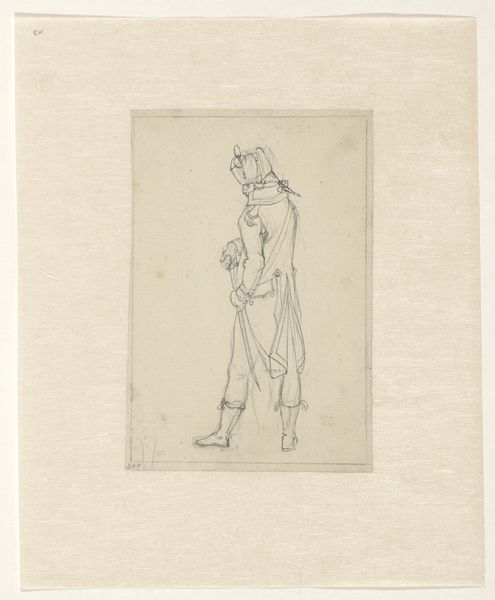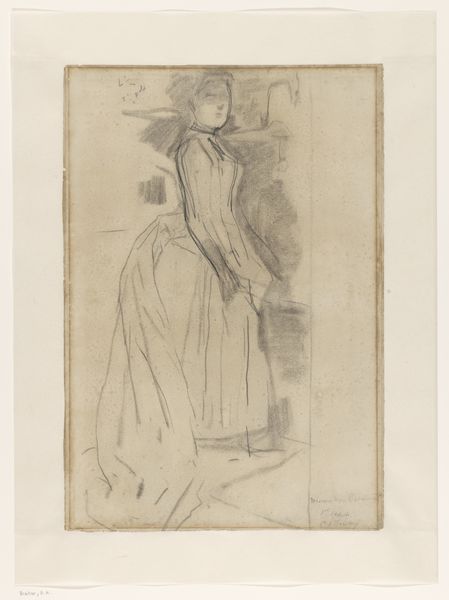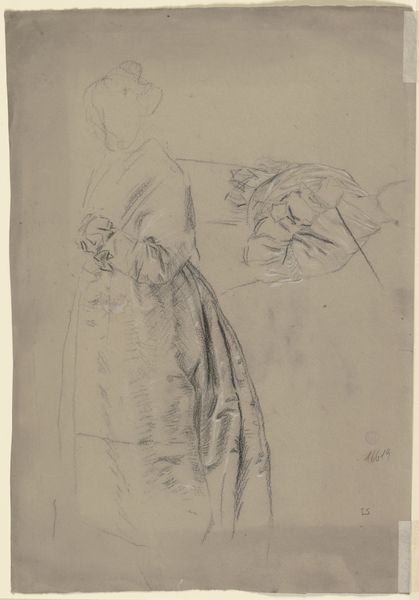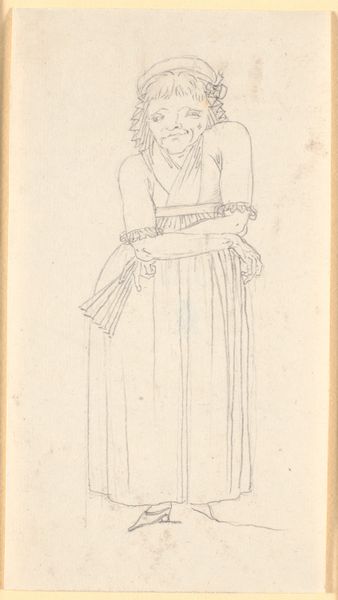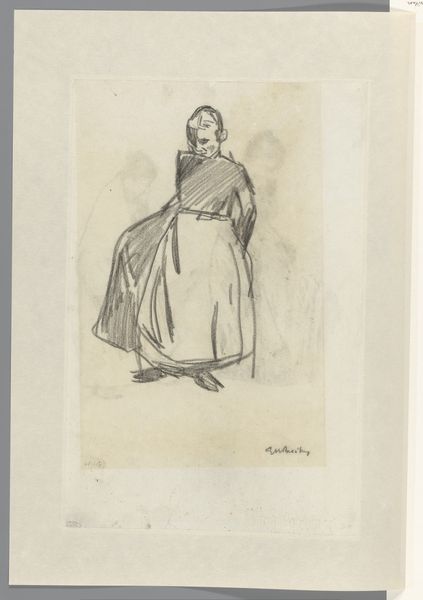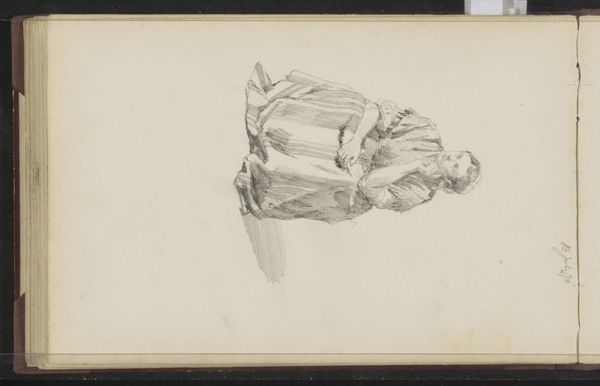
drawing
#
portrait
#
drawing
#
figuration
#
romanticism
#
academic-art
#
nude
Dimensions: 191 mm (height) x 124 mm (width) (bladmaal)
Curator: Welcome. We’re standing before Christen Købke's drawing, "Standing Half-Draped Model Seen from the Side," dating from between 1810 and 1848. Editor: The immediate feeling I get is one of restraint. Look at the muted palette and how tentative the lines are. Almost academic in its austerity, isn't it? Curator: Definitely, there's a sense of classical reference but with a definite Romantic spirit infusing it. The model is presented in a vulnerable, almost melancholic posture, turning away from the viewer and towards the hard stone. Editor: Yes, and notice the sharp contrasts of material – rough stone against the delicate drapery and the model's bare skin. It underscores a dichotomy, perhaps between permanence and ephemerality. How would an artwork like this be commissioned and created at that time? It probably entailed the cooperation of stonemasons or quarries if KØbke was concerned with details of rendering building materials. Curator: Absolutely. The drawing emerges from an academic tradition of studying the human form. Drapery in itself is not simply clothing. Consider the associations of draped figures with classical sculpture and how that would tie in to societal notions of beauty and ideals. Editor: The choice of pencil, and its application in light, delicate strokes, speaks to its role as a study. Cheaper than paint, this might have served the artist in preparing for a future work, allowing a freedom of experimentation with form and the arrangement of the composition elements like the human subject and roughly hewn stones. Curator: I agree. There is such deliberate attention to line and the careful building of tone. Look, also, at the tension created by what is not shown: the model's gaze, directed downwards, fueling our curiosity, a characteristic of Romantic art to stir the viewer’s emotional responses. Editor: And thinking about it, the ‘unfinished’ quality actually contributes to the artwork's potency, right? Leaving parts undefined creates an opportunity to understand artistic labor and the process of production of an artwork like this. Curator: Precisely. This drawing speaks volumes about how we perceive, idealize, and, ultimately, remember both the artistic canon and human experience. Editor: An interesting synthesis of Romantic ideals conveyed with quite simple, accessible means, wouldn't you agree? A piece of process and cultural archive at once!
Comments
No comments
Be the first to comment and join the conversation on the ultimate creative platform.
